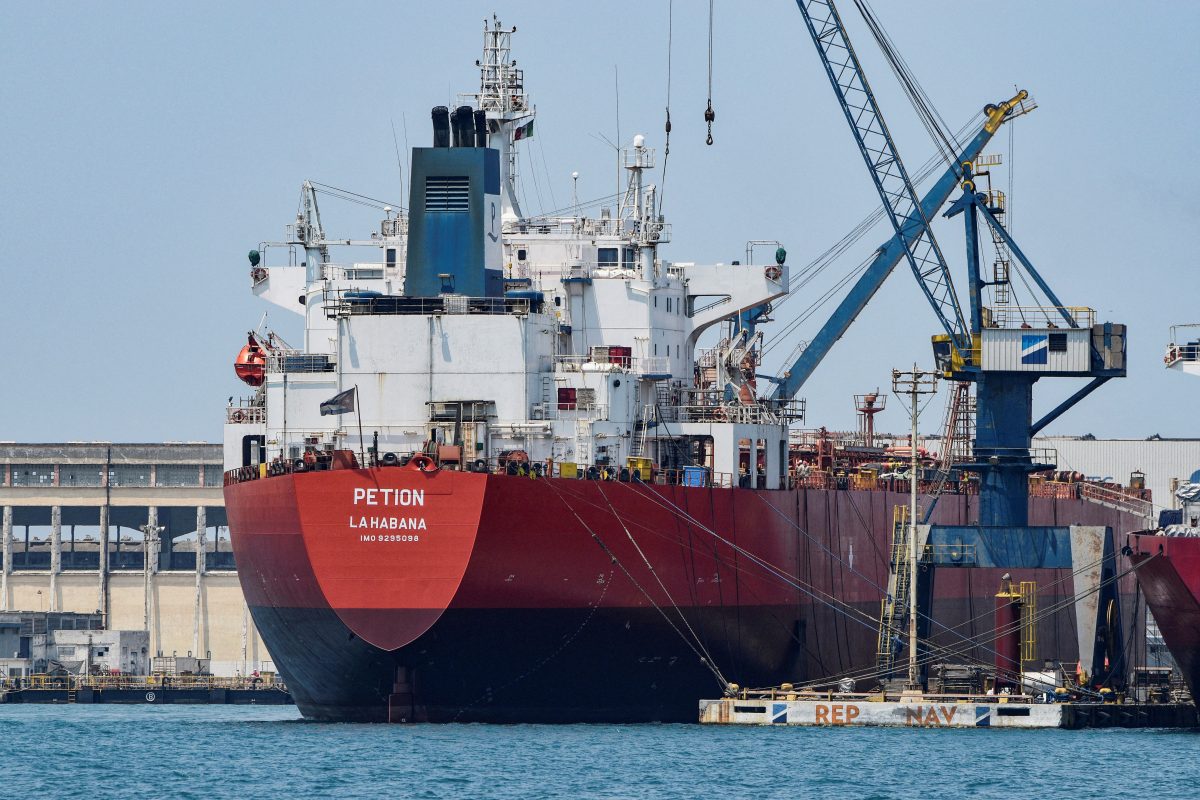HOUSTON, (Reuters) – Cuba has begun using its own tankers to ramp up crude imports from Mexico, which in the second quarter surpassed Russia as a key oil provider to the fuel-thirsty island, according to vessel monitoring data.
Following days-long lines to fill drivers’ tanks and power blackouts, the communist-run nation saddled with harsh U.S. economic sanctions has broadened its sources of oil imports in a move to ease fuel scarcity, replenish stocks and reduce dependence on its traditional and largest supplier, Venezuela. Washington has also sanctioned Venezuela’s oil industry since 2019 over election-fraud claims.
Mexico has emerged as a top provider, sending oil on a vessel owned by state oil company Petroleos Mexicanos (Pemex) and ships managed by Cuba. It has delivered some 2 million barrels in the last four months, a Reuters tally based on tanker tracking showed.
Since July, Cuba-flagged tanker Vilma has completed two trips from Mexico’s Pajaritos terminal to Cuba’s Cienfuegos and Havana refineries. The ship previously ferried Venezuelan crude and fuel oil to Cuba, according to Refinitiv Eikon data.
Cuba-flagged tanker Delsa also delivered Mexican crude from Pajaritos to Cienfuegos in June, and then sailed to Venezuela, where it loaded oil, the data showed.
Cuba’s foreign ministry, Mexico’s foreign ministry and Pemex did not reply to requests for comment.
Vilma and Delsa are among the few Cuban tankers that have not been sanctioned by the U.S. Treasury Department’s Office of Foreign Assets Control.
Other Cuban ships have in recent years been repaired or inspected at a shipyard in Veracruz, Mexico, including U.S.-blacklisted Esperanza, which is currently there.
A U.S. State Department spokesperson told Reuters in April that Washington was “aware that Cuba purchases oil from a variety of countries, both sanctioned and non-sanctioned.”
Pemex tanker Bicentenario separately has completed at least four trips from Mexico to Cuba this year, according to the data.
In total, Mexico has supplied Cuba with about 13,000 barrels per day (bpd) of Olmeca light crude since April, the data showed. The crude is a better fit for Cuba’s aging refineries than Venezuela’s heavy oil.
Venezuela in recent years has struggled to produce enough fuel for domestic needs, reducing what it could export. Its shipments to Cuba this year through July dropped to 55,000 bpd from almost 80,000 bpd in 2020.
Mexico and Venezuela were steady crude suppliers to Cuba under the San Jose Pact in the 1990s. While Venezuela expanded exports to the island since agreeing to a bilateral trade pact in 2000, Mexico had only sporadically sent cargoes to Cuba for humanitarian reasons until this year.
Russia supplied Cuba with some 12,000 bpd of oil, mostly crude, between February and July, according to the Eikon data.
Cuba is nearly always in short supply of fuel, but never more so than during the sultry Caribbean summer, when residents crank up air conditioning, drawing down reserves.
The Cuban government this year began refurbishing its decrepit oil-fired power plants. Those repairs and larger fuel supplies from Russia and Mexico, have contributed to steadier generation and fewer blackouts this year over last.
But refined products used in passenger vehicles, public transportation and in some power generation have been scarce since March, forcing the government to ration at the pump.





